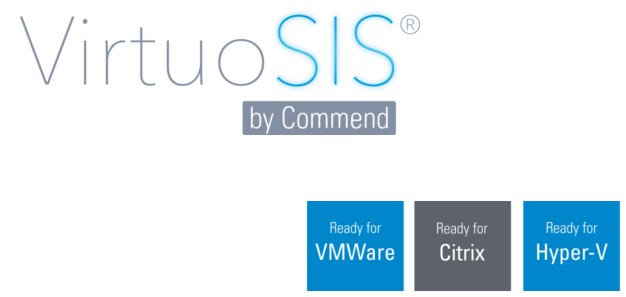 Uncover what the best solution is for you. We asked a few questions of the local Commend Intercom sales manager to get you started down the right path for your organization.
Uncover what the best solution is for you. We asked a few questions of the local Commend Intercom sales manager to get you started down the right path for your organization.
What is the advantage of a hybrid topology?
Intercom server direct connection via copper to intercom stations and 3rd party telephone, or video/audio control systems. Distributed intercom servers like the Commend GE300/800 allow for localized intercom system operation in the event of network outages. Existing infrastructure cabling can often be leveraged as well.
What is the advantage of a server based topology?
Server (VirtuoSIS) system processes are run in a single imbedded kernel which is highly efficient versus multiple synchronized CPU hardware modules. This allows for more simultaneous channel connections of intercom stations IP, SIP and/or RTP audio streams. System intercom server redundancy is supported without the need to purchase additional components (when operating in an environment supporting hypervisor monitoring and control of virtual operating system).
What is the clear difference? i.e. when would one be used over the other?
Hybrid hardware (GE-300/800) would be used in an environment where network access is not available between intercom stations, telephone and or 3rd party control systems. GE-800 system would be used typically when intercom server distribution over the network is preferable this is primarily done when network connectivity or stability or localized available bandwidth restrictions are in question.
Which is more IT friendly? Why?
Both VirtuoSIS and GE-800 use the identical IP protocols, codecs, data ports and data interface. As such one is not any more or less IT friendly. Consideration is that the in typical VirtuoSIS installation all system IP traffic and control data are routed through a single network interface (supporting the VirtuoSIS vertical server machine), total bandwidth throughput must be considered.
What are the cost differences comparing one solution to the other?
 Download the Intercom Budget Tool (subject to change) which shows overview comparisons of various systems. This is particularly helpful to find the "dividing point" where one system becomes more affordable from a parts list perspective than another solution. Remember, aside from price there ae other parameters such as cablining limitations, remote locations, system ownership/management, and more to consider.
Download the Intercom Budget Tool (subject to change) which shows overview comparisons of various systems. This is particularly helpful to find the "dividing point" where one system becomes more affordable from a parts list perspective than another solution. Remember, aside from price there ae other parameters such as cablining limitations, remote locations, system ownership/management, and more to consider.
How are substations and master stations impacted as far as options?
Intercom station functionality and feature sets are identical regardless iof infrastructure solution.
Is there a software or user interface difference?
The same configuration software and user interface software is used with both systems.
Is cloud deployment possible?
VirtuoSIS=yes, GE-300/800=no.
How do you start with one solution and move to the next level?
Both VirtuoSIS and GE-300/800 intercom servers may be used within the same system. Each is fully compatible with the other and work together seamlessly.
What about challenging environments such as vehicle traffic, healthcare, industrial, corrections, and campuses?
We compiled a list of unique challenges and solutions for these types of environments here
Resources | Learn | Advice:
[VIDEO] Server based intercom
 More about intercom architecture
More about intercom architecture
 More about server based intercom (VirtuoSIS)
More about server based intercom (VirtuoSIS)
 Challenging intercom environments
Challenging intercom environments

 Uncover what the best solution is for you. We asked a few questions of the local Commend Intercom sales manager to get you started down the right path for your organization.
Uncover what the best solution is for you. We asked a few questions of the local Commend Intercom sales manager to get you started down the right path for your organization. Audio intelligibility
Audio intelligibility Intercom device catalog
Intercom device catalog

